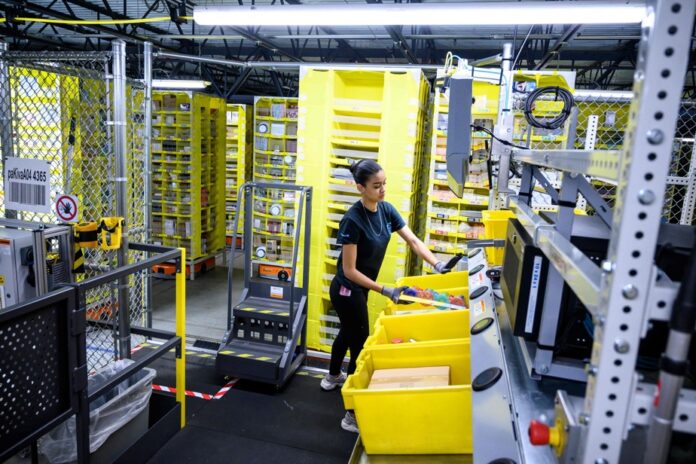(Washington) The job market in the United States is showing signs of easing, despite a still low unemployment rate and an increase in hiring, according to a survey released by the Federal Reserve (Fed) on Wednesday.
“Employment grew modestly” from the previous survey in late May, “with growth in most regions,” the central bank points out in its Beige Book, an economic report always released two weeks before the next monetary meeting.
This activity barometer carried out with the twelve regions of the Fed highlights “an improvement in the available workforce, with some employers pointing out that it is easier to recruit than it has been so far”.
Moreover, the level of turnover “unusually high in recent years”, which favored the increase in wages and therefore prices, is returning to the norms observed before the pandemic.
Wages “continue to rise, but more moderately,” the report said.
However, business leaders interviewed continue to report “difficulties in finding employees”, particularly in sectors such as hospitality, transport and health.
The Beige Book also highlights a “slight economic growth” at the national level.
The expansion is supported in particular by consumer spending, but “the growth is primarily in services spending, as merchants see a reduction in discretionary spending.”
On the other hand, borrowing conditions “continue to ease” and the construction sector is down slightly.
An expenditure item that continues to fuel inflation, demand for housing remains strong.
Finally, the pace of price increases is slowing in several regions, as “consumers become increasingly price-sensitive”.
The survey was carried out over the whole of June.
The Fed’s Monetary Committee (FOMC) is due to meet on July 25 and 26 and decide whether a further rate hike is necessary, after the pause decided at the last meeting in mid-June.
Markets are so far betting on another 0.25 percentage point hike in the key interest rate, currently in a range of 5% to 5.25%, with the Fed considering at least one more hike thereafter by the end of the month. end of the year.
But inflation slowed more than expected in June, with the CPI index, published on Wednesday, standing at 3% year on year, its lowest level since March 2021.
As a result, the markets are beginning to think that the expected rise in July could be the last of the cycle.















